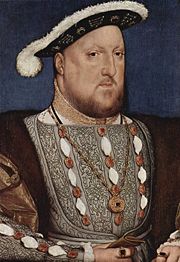Portal:Anglicanism
2008/9 Schools Wikipedia Selection. Related subjects: Portals; Religion; Religious movements, traditions and organizations

A map showing the Provinces of the Anglican Communion (Blue). Also shown are the Churches in full communion with the Anglicans: The churches of the Porvoo Communion (Green), and the Old Catholics (Red).
Anglicanism most commonly refers to the beliefs and practices of the Anglican Communion, a world-wide affiliation of Christian Churches. There is no single "Anglican Church" with universal juridical authority, since each national or regional church has full autonomy. As the name suggests, the Anglican Communion is an association of these churches in full communion with the Archbishop of Canterbury. With over seventy seven million members, the Anglican Communion is the third largest communion in the world, after the Roman Catholic Church and the Eastern Orthodox Churches. Anglicanism, in its structures, theology and forms of worship, is understood as a distinct Christian tradition representing a middle ground between Roman Catholicism and Protestantism and, as such, is often referred to as being a via media (or middle way) between these traditions. Anglicans uphold the Catholic and Apostolic faith and follow the teachings of Jesus Christ. In practice Anglicans believe this is revealed in Holy Scripture and the creeds, and interpret these in light of Christian tradition, scholarship, reason, and experience.
The English Reformation refers to the series of events in sixteenth-century England by which the church in England broke away from the authority of the Pope and the Roman Catholic Church. These events were part of a wider process, the European Protestant Reformation, a religious and political movement which affected the practice of Christianity across the whole of Europe during this period. The English Reformation began as another chapter in the long running dispute with the Roman Catholic Church over the latter's claimed jurisdiction over the English people, though ostensibly based on Henry VIII's desire for an annulment. It was, at the outset, more of a political than a theological dispute, but the reality of political differences between Rome and England nonetheless allowed growing theological disputes to come to the fore. The split from Rome made the English monarch head of the English church by " Royal Supremacy", thereby establishing the Church of England, but the structure and theology of that church was a matter of fierce dispute for generations. It led eventually to civil war, from which the emergent church policy at the end was that of an established church and a number of non-conformist churches whose members at first suffered various civil disabilities, which were removed only over time. Catholicism emerged from its underground existence only in the nineteenth century.
The Washington National Cathedral is an Episcopal cathedral in Washington, D.C. It is a listed monument on the National Register of Historic Places.
Thomas Cranmer ( 2 July 1489 – 21 March 1556) was the Archbishop of Canterbury during the reigns of the English kings Henry VIII and Edward VI. He was an influential theologian who, with Richard Hooker and Matthew Parker, was a co-founder of Anglican theological thought. He helped build a favourable case for Henry's divorce from Catherine of Aragon and guided the English Reformation, which denied papal authority over the English Church, during its earliest days. Following Henry's death, Cranmer became a key figure in Edward's regency government.
Scholars credit Cranmer with writing and compiling the first two Books of Common Prayer, which established the basic structure of Anglican liturgy for more than four centuries. Many phrases from its services passed into the English language, either as deliberate quotations or as unconscious borrowings. Cranmer was executed in 1556 for heresy after Queen Mary I reunited the Church of England with the Roman Catholic Church. Anglican culture, particularly the literature of John Foxe, later celebrated Cranmer as a martyr. His impact on religion in the United Kingdom was profound and lasting.
|



